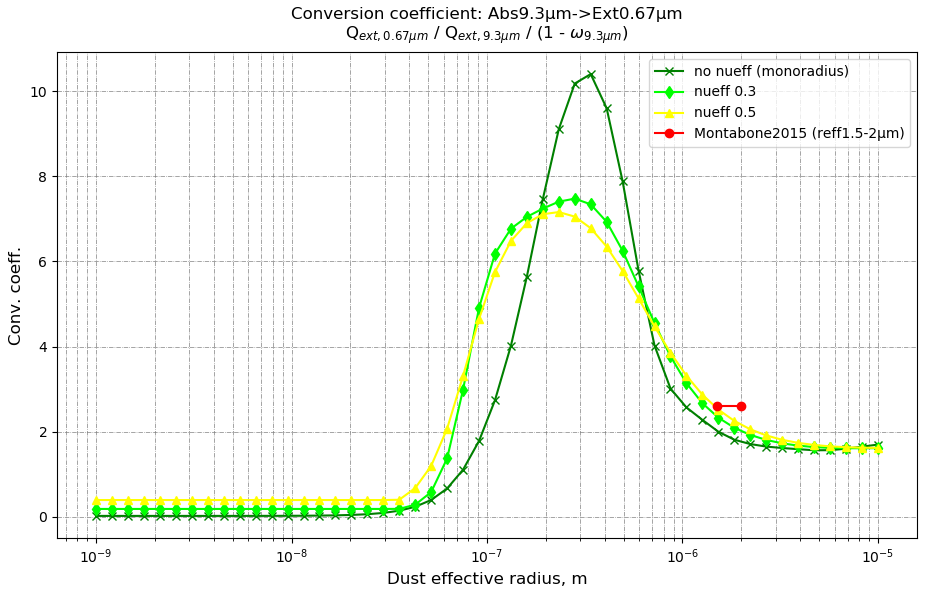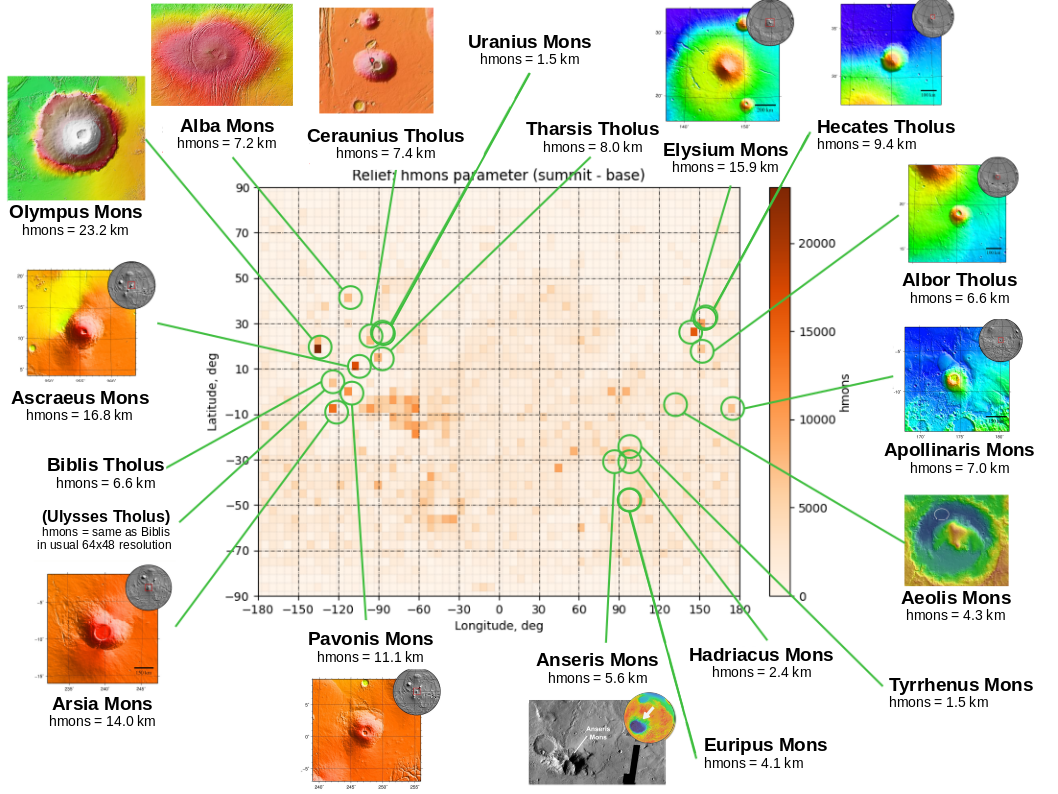Improving the vertical distribution of airborne dust in the Mars PCM
- 1LMD, IPSL, CNRS, Sorbonne Universite, Laboratoire de Meteorologie Dynamique, Paris, France (ehouarn.millour@lmd.jussieu.fr)
- 2Institut Pierre Simon Laplace (IPSL), Paris, France
- 3College of Surveying and Geo-Informatics, Tongji University, Shanghai, China
The Mars Planetary Climate Model (PCM)
The Mars Planetary Climate Model (Mars PCM, or MPCM) [1] is a Global Climate Model (GCM) initially developed at the Laboratoire de Météorologie Dynamique [2] that has matured to become a community model developed in collaboration with many teams around the world (LATMOS, the Instituto de Astrofisica de Andalucia, UAE University, University of Oxford, The Open University), and with the support of ESA (European Space Agency) and CNES (French Space Agency). The Mars PCM simulates the Martian atmosphere from the subsurface to the subsurface to the exobase and includes detailed parametrizations to adequately represent the main cycles of dust, water and CO2 that control the current Martian climate. It also includes some additional modules accounting for chemistry, thermospheric and ionospheric processes.
The Mars PCM is freely distributed, via a dedicated subversion repository [4] to keep track of code updates and a MediaWiki [5] for user documentation.
As the Mars PCM, once some improvements have been added, is used to regularly generate new versions MCD, Mars PCM version numbering follows those used for MCD: The latest version of the MCD, MCDv6.1 [3], was thus produced with Mars PCM version 6, whereas previous major MCD version, MCD v5.3 [6] was produced using Mars PCM version 5. Without going in the details of all the changes and improvements going from Mars PCM v5 to Mars PCM v6, let us merely mention here that one of the main ones concerns the dust cycle related parametrizations.
Mars PCM version 5 dust cycle parametrizations
The scheme, and modeling strategy are essentially those described in [7] which can be summarized as follows:
-
The (very nonlinear and poorly known) physical processes leading to dust lifting are not represented, instead lifting of dust is assumed to occur everywhere and all the time, but the overall dust column is re-normalized to follow imposed “dust scenarios” (such as those produced from observations [8])
-
Dust is handled as a distribution of particles (via its two first moments) to correctly account for varying particle sizes. As a tracer it is affected by all dynamical and physical processes such as large scale advection, turbulence, sedimentation, etc. In that sense the scheme is said to be “semi-interactive” as only the column amount is prescribed but not the vertical distribution of dust.
Mars PCM version 6 dust cycle parametrizations
One of the main flaws of the Mars PCM version 5 dust cycle representation is that the resulting vertical distribution of dust displays an accumulation of dust near the surface fails to produce any of the detached layer that are observed[9]. In addition, re-scaling the column amount of dust also has the drawback (as input “dust scenarios” contain one value per day) of imposing an unrealistic diurnal cycle of the airborne dust.
The dust cycle parametrizations have thus been revised as to:
-
inject dust in the system via a “rocket dust storm parametrization” [9], which leads to the generation of dust detached layers. Alongside this way to inject the dust in the system (note that the physics of the lifting of the dust from the surface is not accounted for in this framework) comes the question of when, in terms of time of day, to inject the dust in the system. Our investigations show that in practice injecting at all times of day, although possibly not too realistic, yields reasonable results.
-
determine the amount of dust to inject depending on what is already present in the column versus what is given in the target dust scenario, which enables to have a physically driven diurnal cycle of airborne dust. In addition, when converting from the opacities from the dust maps from [8], which are expressed in the infrared as absorption at 9.3 microns, to visible extinction at 0.67 microns (used by the radiative transfert in the PCM), the actual effective radius of dust (inferred by the PCM) is used, rather than a fixed 2.6 ratio as was done in PCMv5 (see figure1).
-
Account, via a sub-grid scale parametrization, for the high altitude recycling of near-surface dust by anabatic winds along the flanks of large volcanoes (a funneling of dust which is obtained in mesoscale simulations which have a sufficiently high horizontal resolution to resolve these extreme topographies [10]). In practice, this parametrization is only triggered on PMC grid points containing the 19 largest volcanoes (see Figure 2) and improves the representation of overall airborne dust during the clear season.

Figure 1: Conversion coefficient between infrared (absorption at 9.3 microns) opacities and visible (extinction at 0.67 microns) opacities, based on tabulated properties from a T-matrix code for various ranges of dust effective radii and dust distribution variances (green and yellow lines). Is also shown (in red) the 2.6 value from [8], based on the assumption of dust effective radii of 1.5 to 2 microns

Figure 2: Illustration, on a global topography map of Mars at the Mars PCM resolution (center) of the location of the 19 Mons where the parametrization of the recycling of dust due to anabatic winds along the flanks of volcanoes is applied.
References
[1] Forget F. et al. (2022) 7th International Workshop on the Mars Atmosphere: Modeling and Observations.
[2] Forget F. et al. (1999) J. Geophys. Res., 104, 24,155-24,176.
[3] Millour E. et al. (2024) 10th International Conference on Mars.
[4] http://svn.lmd.jussieu.fr/Planeto/trunk
[5] https://lmdz-forge.lmd.jussieu.fr/mediawiki/Planets
[6] Millour E. et al. (2018) “From Mars Express to ExoMars” Scientific Workshop abstract.
[7] Madeleine J.-B. et al. (2012) J. Geophys. Res., 116, E11.
[8] Montabone L. et al. (2024) EuroPlanet Science Congress abstract.
[9] Wang C. et al. (2018) J. Geophys. Res., 123, pp. 982.
[10] Rafkin S. et al. (2002) Nature, 419, 6908, pp. 697-699.

How to cite: Millour, E., Bierjon, A., Forget, F., Spiga, A., Wang, C., and Mars PCM Team, T.: Improving the vertical distribution of airborne dust in the Mars PCM, Europlanet Science Congress 2024, Berlin, Germany, 8–13 Sep 2024, EPSC2024-738, https://doi.org/10.5194/epsc2024-738, 2024.